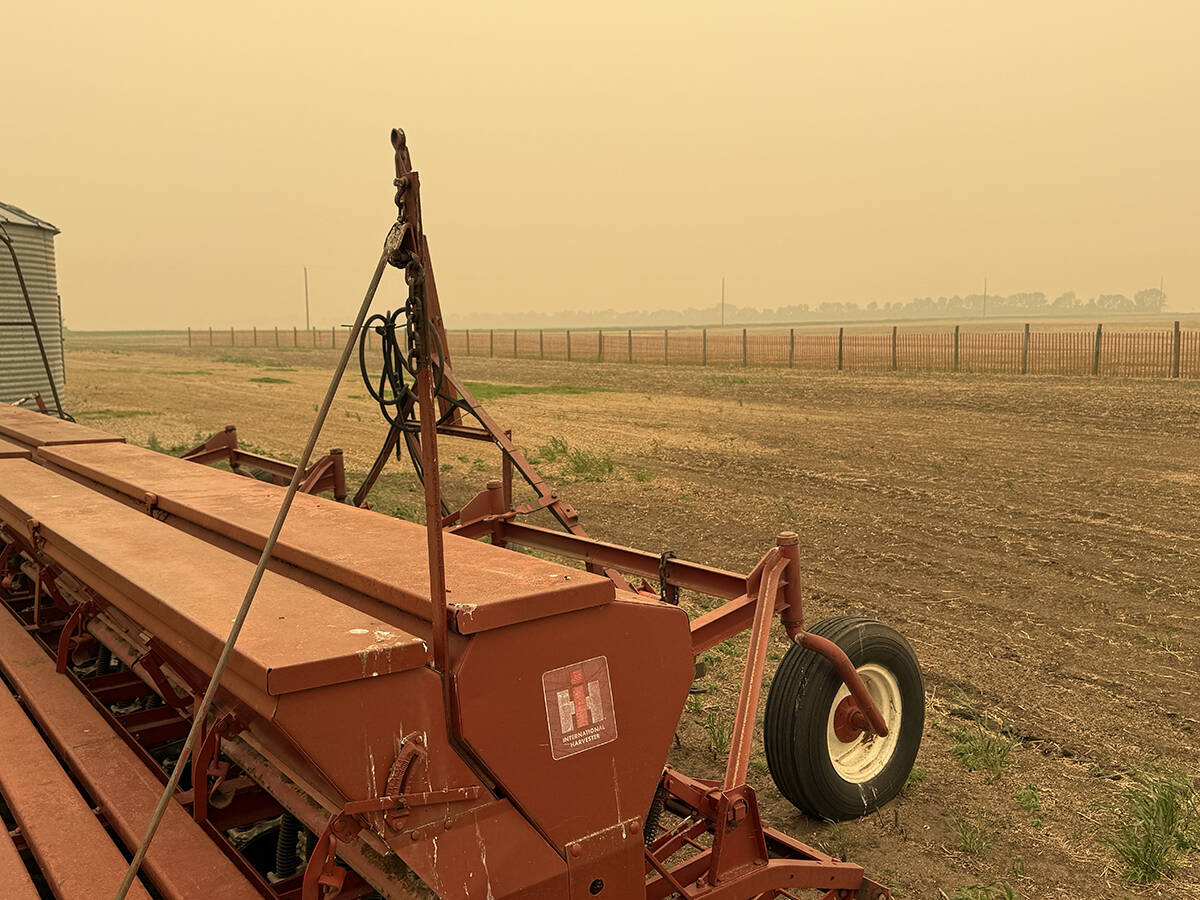COLD LAKE, Alta. – Despite three years of drought, grasshoppers and BSE, a northern Alberta couple believes there is still a future in farming. They plan on showing that support by buying more land and doubling their cattle operation.
“I’m convinced it’s a good idea,” said Ron Brawn, sitting at the kitchen table after a morning of fencing part of their existing four deeded and one leased quarters of land.
The additional five quarters of land, house and newer equipment in the operation Ron and Rhonda Brawn want to buy would allow the couple to become self-sufficient in feed, give them a chance to own newer farm machinery and establish a solid farming operation when Ron retires from his job with Imperial Oil in 12 years.
Read Also

Wildfires have unexpected upside this year
One farmer feels smoke from nearby wildfires shrouded the July skies and protected his crop from the sun’s burning rays, resulting in more seeds per pod and more pods per plant.
“When that’s done I want to have something to do,” said Ron, who only discovered farming in 1995 when he bought his first four cows from the family of his earlier marriage.
By 1997, he owned 12 cows and now Ron and Rhonda calve about 45 cows each year.
“I’m not a cattle man yet. I’ve stumbled a few times,” said Ron who, along with Rhonda, began showing purebred black Angus cattle on the show circuit in 1999 and have had winning cattle since the beginning.
Rhonda credits part of that success to sticking to their plan and not changing with the cattle fashions each season like a teenager who needs to have a certain brand name.
“We try to stick with our own game plan,” she said.
Raising winning cattle has helped the couple through the BSE crisis.
Instead of averaging $2,500-$3,500 for their bulls before BSE, they can still command a respectable $1,500 for them and it has brought people to their northeastern Alberta farm to buy their cattle.
The addition of two children and the need to cut expenses led the couple to scale back the expensive show circuit schedule this year and concentrate on smaller shows.
“We’ve scrambled quite a bit. We had anticipated certain sales. It’s really slowed us down for creating cash flow,” said Ron.
Now he is working as much overtime as possible to pay farm bills and Rhonda has decided it makes more sense to stay home with her children instead of routing most of her paycheque to child-care expenses.
Rhonda’s work with the cattle and in the fields is minimal because of demand from two young children, Braxton, 4 months, and Shyann, 30 months, and two older childrenfrom a previous marriage, Alyssa, 15 and Garrett, 13.
“My part of the farming is put on hold until the kids are a little older,” she said.
Juggling older children and younger children is not easy. While there is a built-in baby sitter, the younger children get brought along to the older kids’ events, in sometimes child unfriendly environments.
“They do not have baby change stations in arenas. That’s so frustrating,” said Rhonda, who said she’s had to borrow the referee’s rooms to change diapers while waiting for her son to get off the ice.
When cattle prices bounce back and they expand their show circuit schedule again, Rhonda hopes showing cattle can be an event all the family can enjoy.














